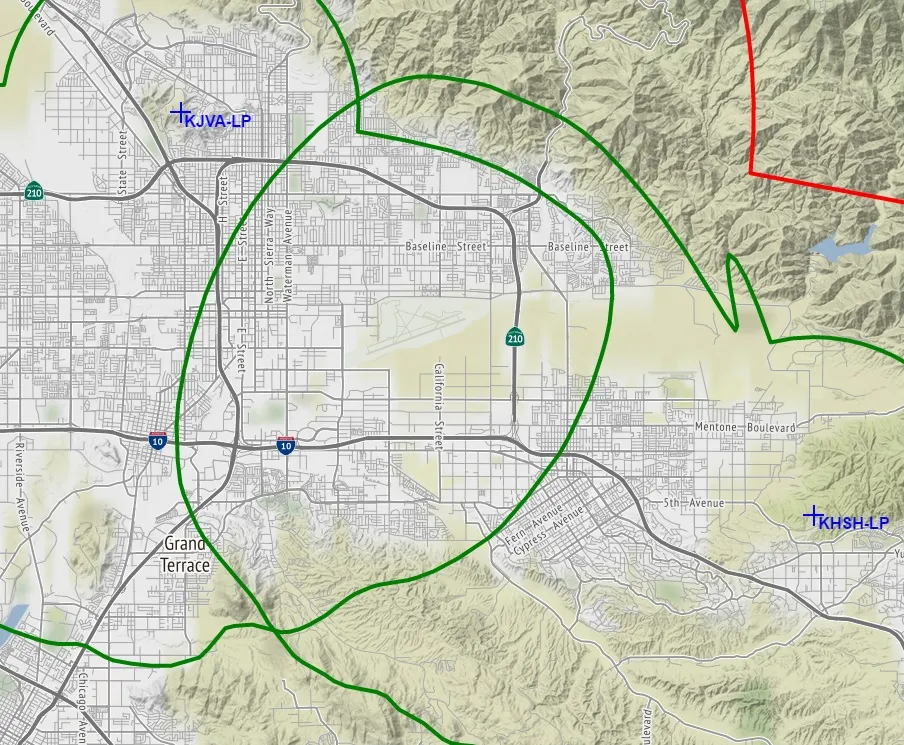
I am very disappointed by the Audio Division's decision on the Petition for Reconsideration filed by Vida Abundante, the licensee of first-generation LPFM station KJVA-LP, San Bernardino, CA regarding interference by second-generation station KHSH-LP, Redlands. Instead of thinking outside the box and running some simple contours (like I did below), the Bureau fell back on a regulation that has been rarely applied in the broadcast context and dismissed the petition because it did not contain some kind of engineering affadavit.
This again brings into issue our "one-size fits all" nature of LPFM. A service that does not take into consideration that the earth is not flat and that terrain exists. The problem here is because LPFM uses the same 8 radial height above average terrain concept that full-power stations use to determine station class. Because of this, a station located on a lower elevation with a valley on one site and a mountain range on the other side is going to get a HAAT below 30 meters and thus 100 watts. This is because the higher HAAT readings towards the valley and the lower HAAT readings towards the mountains average out. This is what results in these huge lobes in what I refer to in RM-11749 (the LP-250 petition) as "the foothill effect". For FM translators not being used for fill-in, the FCC uses a "maximum HAAT" rule where for non-directional antennas, they look at the HAAT individually on each of the 12 radials and use the highest HAAT in each radial to determine the ERP for the station. Here's what each station would look like:
KJVA-LP (radial/HAAT)
0 -521
30 - 659
60 -394
90 -122
120 224
150 257
180 281
210 257
240 199
270 108
300 -77
330 -408
KHSH-LP (radial/HAAT)
0 -205
30 -267
60 -531
90 -382
120 -92
150 74
180 177
210 188
240 179
270 359
300 383
330 170
So, if we were to use the maximum HAAT KJVA-LP's HAAT would be adjusted to 281 meters HAAT and KHSH-LP would be adjusted to 383 meters HAAT. If we applied the 5.6 km service contour to these HAATs, KJVA-LP would be authorized 2 watts ERP and KHSH-LP, 1 watt ERP. Even at those levels, there would still be contour overlap under the translator and NCE rules. But under the current rules, these stations have service contours that rival full power Class A stations in some directions.
LPFM was created to be located on low-level sites at schools and the buildings of non-profit organizations in neighborhoods. The design of the rules never anticipated mountaintop sites. Even for low-level sites, the current method of using HAAT is not efficicent because it does not take into consideration most of the terrain inside the station's protected service contour.
I hope there is a resolution to this matter. Perhaps a voluntary time share which can be done even without the FCC's blessing as the two stations are not mutually exclusive. If the two stations would agree to operate exactly 12 hours per day (no less or else it counters the rules for potential time share challenges), this could potentially work out. KHSH is already on a time share with even another station.
In the big picture, we need to rethink these rules as they do not take terrain into consideration. For now, we hope these two groups could reach a plan to allow everyone to share the spectrum. I will be more than happy to mediate such a proposal. Please let me know!
Michelle Bradley
Founder
REC Networks

